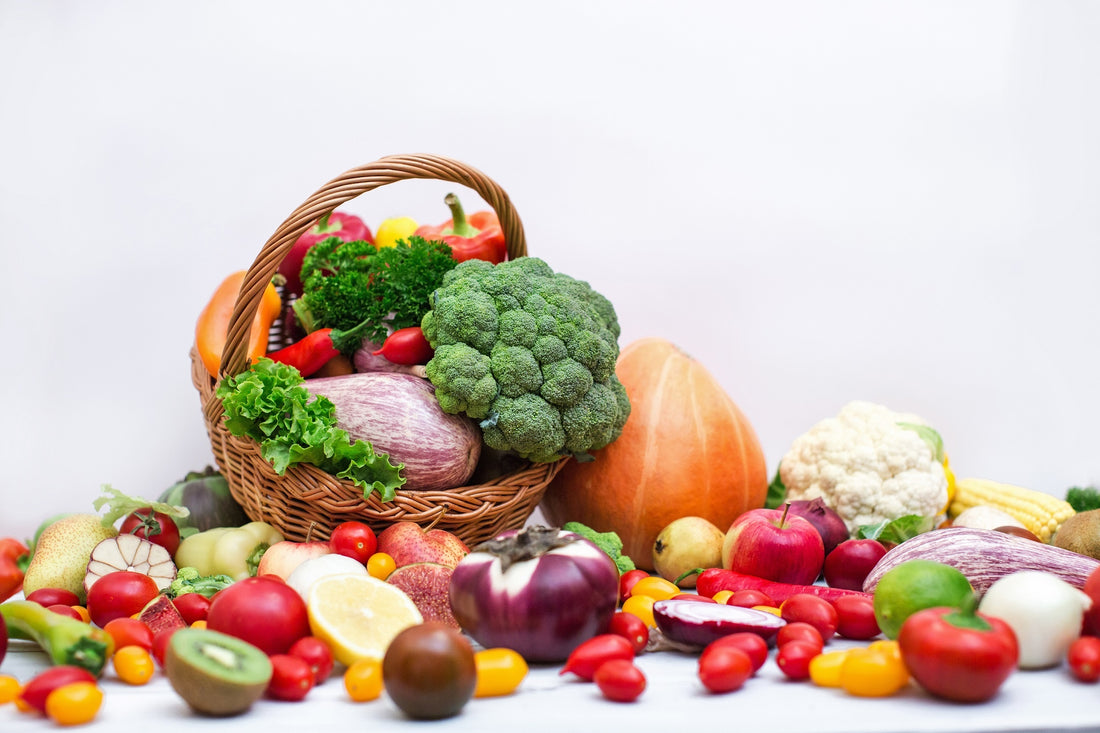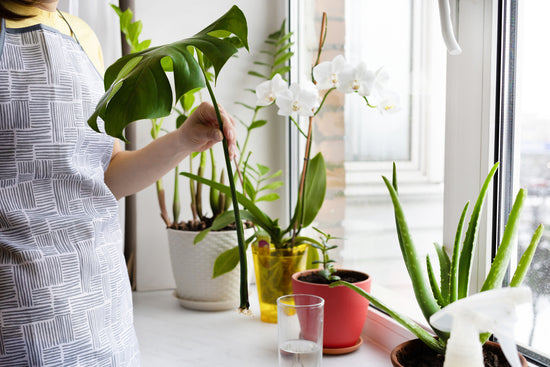
Why grow your own food?
Food is the true medicine. If we eat fresh, organically grown, non-GMO vegetables on a regular basis our health improves and so does our body’s ability to fight infections and ailments. Commercially grown vegetables are pumped full of fertilisers, pesticides, and are sometimes grown with genetically modifies seeds that give a higher crop yield. Furthermore, the nutrition value of fresh produce declines by 30% to 40 % in the first three days it takes for the vegetables to reach your plate from the time it is harvested. So, you are not only getting a plateful of chemical filled veggies but also lesser nutrition than what the produce should have given you.
Growing vegetables not only ensures the health of you and your loved ones, but it is also a boon for the environment.
- It reduces the growing strain on the global food chain
- It reduces the carbon footprint of the food you consume by eliminating the food miles (distance) your food had to travel to reach you.
It is easy to grow vegetables at home!
Growing vegetables is like growing any other plant, albeit with more investment on the returns. As compared to ornamental gardening they just need a little more sun, a little more manure and little more watering.
But it is as easy as 1 2 3!
5 easiest to grow vegetables for Indian homes
While there is a plethora of vegetables that can be grown at home ranging from the exotic red radish and broccoli to salad greens and herbs like the arugula, lettuce, thyme, sage and so many more, her we are going to discuss the five of the most commonly consumed veggies in Indian homes based on the eat amount of efforts required on the growers end and the least space they take up in your balconies, terraces, or window boxes by the virtue that they grow exceedingly well in pots.
We will talk in depth about growing
- Tomatoes (all varieties)
- Beans family
- Chilli family
- Gourds
- Cucumbers
Things you need to start your own vegetable garden
Starting your vegetable garden doe not really require anything fancy and the myths around the expense are just that – myths. Here is a list of requirements to get you started on your vegetable gardening journey!
- A well-ventilated spot that gets at least 5 hours of direct sunlight through the day. It can be in your balcony, your terrace, outside your home in your garden or even your window boxes.
- Seedling trays or small planters, or small paper/plastic cups to germinate seeds indoors for a good produce.
- Big planters, at least 12 to 15 inches in diameter and just as tall if not more. The material is truly immaterial, you can use grow bags, terracotta planters, plastic, or fibre planters or even jute ones. You can repurpose old buckets, drums or matkas for planting or any other containers the meet the size requirements. Just make sure to drill holes into the bottom for ample drainage.
- A misting spray to spray neem oil, fertilisers, and water.
- A rich, well-draining potting mix that supports healthy growth, organic compost, neem oil, and regular tap water.
You are all set, let’s start!
How to setup a vegetable garden
Let’s take a look at some few easy pointers to set up your vegetable garden of you are a beginner setting foot on this rewarding journey.
Seeds germination
The first step is to source good quality non-GMO seeds from a trusted source and Ugaoo is here for that. With over 150 years of experience in the seed industry, we assure you that you can trust us.
The second step is to germinate the seeds indoors. Start the seeds in a well-draining mix of red soil and compost. Or you can just reduce all the hassle by using Ugaoo’s Pot-o-Mix directly from the packet. Plant one seed per slot and keep the soil moist but not soggy. Start the process well in advance (2 weeks) before the actual planting.

Soil
For the final planter, use a good mix of high-quality red soil, organic compost ( vermicompost, organic kitchen compost), cocopeat, neem cake powder, gritty sand or perlite for drainage.
One of the safest proportions is an equal proportion or red soil, compost, and cocopeat, with 20 to 30% gritty soil or perlite and neem cake powder.

Transplanting
Transplant your saplings to the final planter when the sapling has at least 2-3 sets of true leaves. While transplanting make sure to not damage the root ball. Plant the sapling such that the potting mix covers the root ball but does not weigh down on the plant.
Watering
Water your garden regularly to maintain a uniformly moist potting mix, but not soggy. Take care to not wet the plants while watering to reduce chances of pest infestations. The water requirements will change with the season and plant size, so take care to keep an eye on you plants and never let the soil get too dry for too long.
Pest control
In our experience, preventive pest control is better, easier, and less strenuous than doing damage control. Just make sure to spray your plants, small or big. With neem oil solution once every 15 days to stop any pests from coming. In case you happen to see any pests still, take immediate steps to get rid of them either with neem oil solution application or a soap water solution with a misting spray also works. Just make sure not to spray it during peak sun to avoid lea scorching.
Fertilisation
Make sure to add a good dose of manure at the time of planting to set it up for a good initial growth. Once the plant is mid-way through the growth and you can see flowering, fertilise it every two weeks with organic fertilisers. You can use seaweed fertilisers, bio-enzyme solutions, or any other organic fertiliser easily accessible to you.
Tips for the 5 vegetables
Tomato
While tomatoes are essentially summer vegetables, you can grow them around the year with little effort. They love bright sunlight for most parts of the day and a well-draining soil. Stake the plants when they are your to give them support when it starts fruiting.
Keep an eye on pests and get rid of them at first notice.
Beans
One of the fastest and easiest to grow, they climb really well on trellises or wires just tied to the ceiling. They don’t need much care and grow well in 4-5 hours of sunlight and all year round.
Peppers/Chillies
They love sunlight, good fertilisers, and very little space. One plant gives a good yield and can be harvested multiple times. Give it 4-5 hours of sun, a well-draining potting mix, and good watering.
Gourds
Gourds are almost as easy to grow as beans and climbs freely and yields a high produce. They are seldom plagued by pests and do well with 4-5 hours of sun.
Cucumbers
Cucumbers are easy as well but might ned hand pollination in certain cases as the male and female flowers are separate. They can be grown easily through the year on trellises and supports.
Happy gardening!










